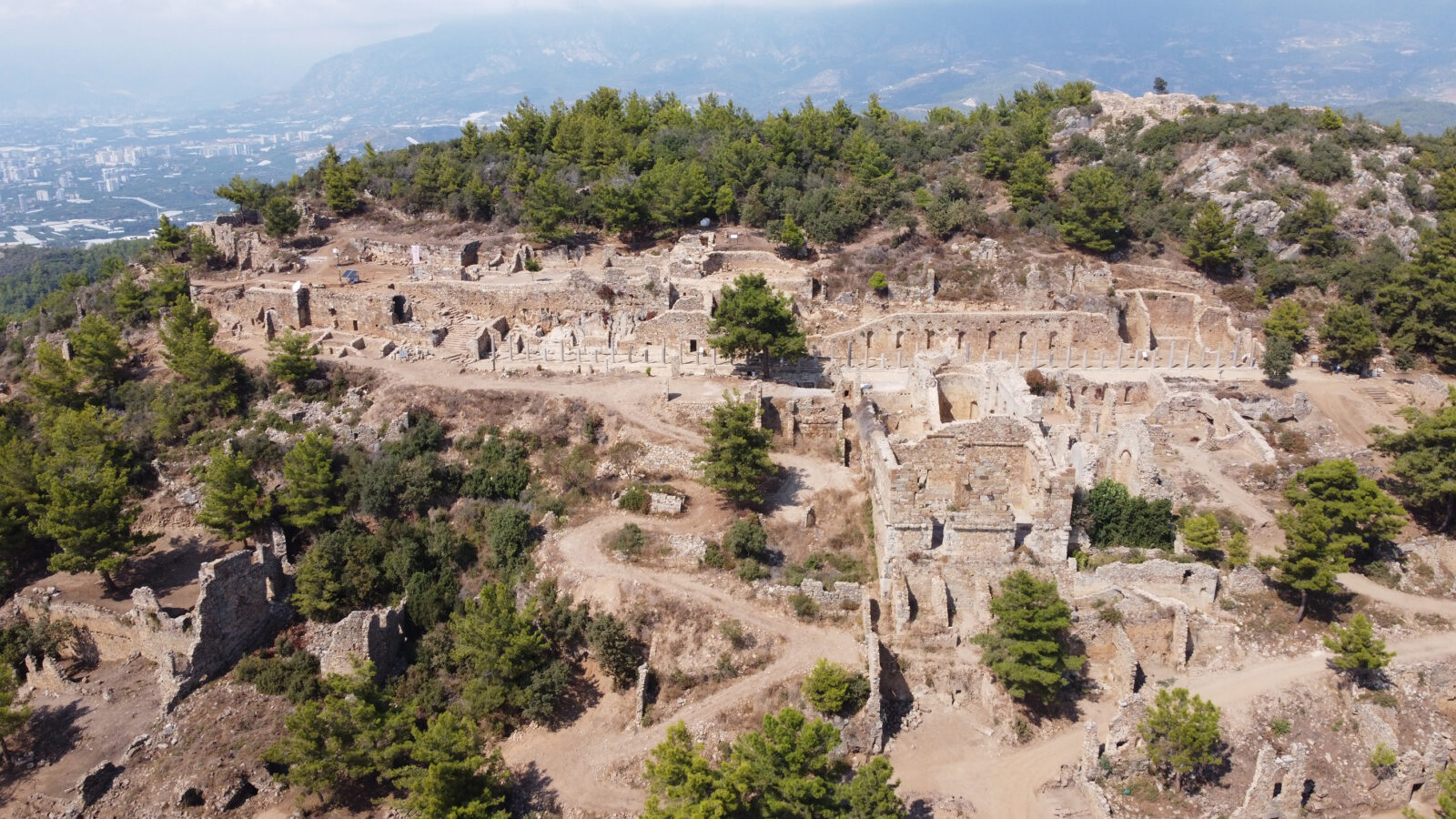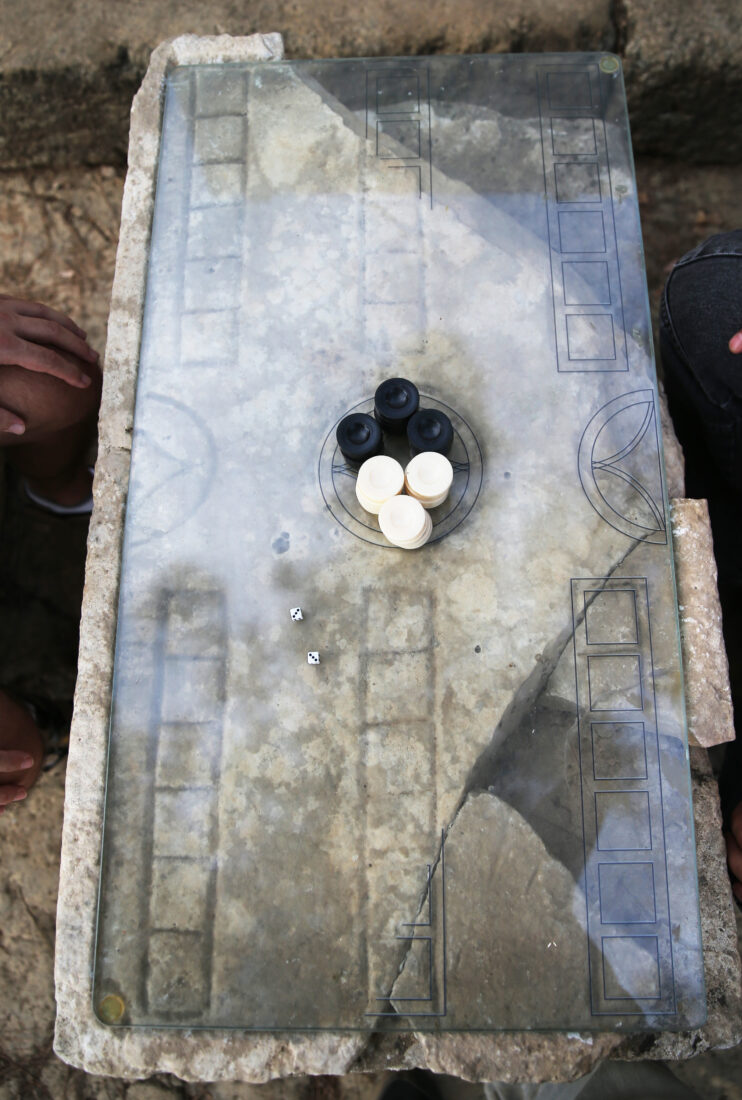The ancient Roman strategy game “Ludus Duodecim Scriptorum,” also known as “Roman Backgammon,” is captivating visitors at the Syedra Ancient City in Alanya, Antalya. Once a popular pastime during Roman and Byzantine times, the game has been recreated to offer modern visitors a glimpse into history.

Discovering Roman pastime in Syedra
Excavations in the Syedra Ancient City, supported by Türkiye’s Ministry of Culture and Tourism, have been ongoing in the 3,000-year-old settlement. Notable landmarks include the 250-meter-long Columned Street, a theater, a council building, baths, cisterns, and a cave named “Baptism.”
During these excavations, archaeologists uncovered a stone block featuring the game “Ludus Duodecim Scriptorum,” thought to be a precursor to modern backgammon.
Found near the Columned Street, the artifact is now displayed for visitors, complete with bilingual information panels detailing the rules of the game.

A Roman strategy game ahead of its time
Associate Professor Ertug Ergurer, head of excavations at Syedra and a faculty member at Alaaddin Keykubat University, explains that the game, known as “Roman Backgammon” or “Tabula,” bears similarities to Byzantine-era games.
“We discovered its fragments during cleaning and restoration works on the Columned Street,” Ergurer said, adding: “We reconstructed the missing parts by drawing on glass. Now, visitors can learn about and play this historical game.”
Rules rooted in strategy
The game is believed to involve 15 pieces and two or three dice, requiring strategic thinking. Players move their pieces based on the sum of the dice or individual rolls. Similar to modern backgammon, players can “capture” opponents’ pieces and aim to gather all their pieces at the final point to win.
While some suggest it may have been inspired by the ancient Egyptian game “Senet,” Ergurer states that no definitive connections have been found. “We know this game dates back at least 2,100 years and was especially popular during the Roman and Byzantine periods,” he added.

Preserving history for public
The stone block was reassembled near the Columned Street, where it is believed to have originally been used. Ergurer noted that similar game artifacts have been found in other ancient cities, highlighting the social importance of such games in Roman times.
“We placed an explanatory board in Turkish and English about how the game is played,” Ergurer said. “However, visitors often take the stones we provide as keepsakes. While we keep replacing them, we encourage everyone to respect the historical value of these artifacts.”
Syedra Ancient City continues to inspire visitors, offering a hands-on experience of ancient Roman culture through this timeless strategy game.
